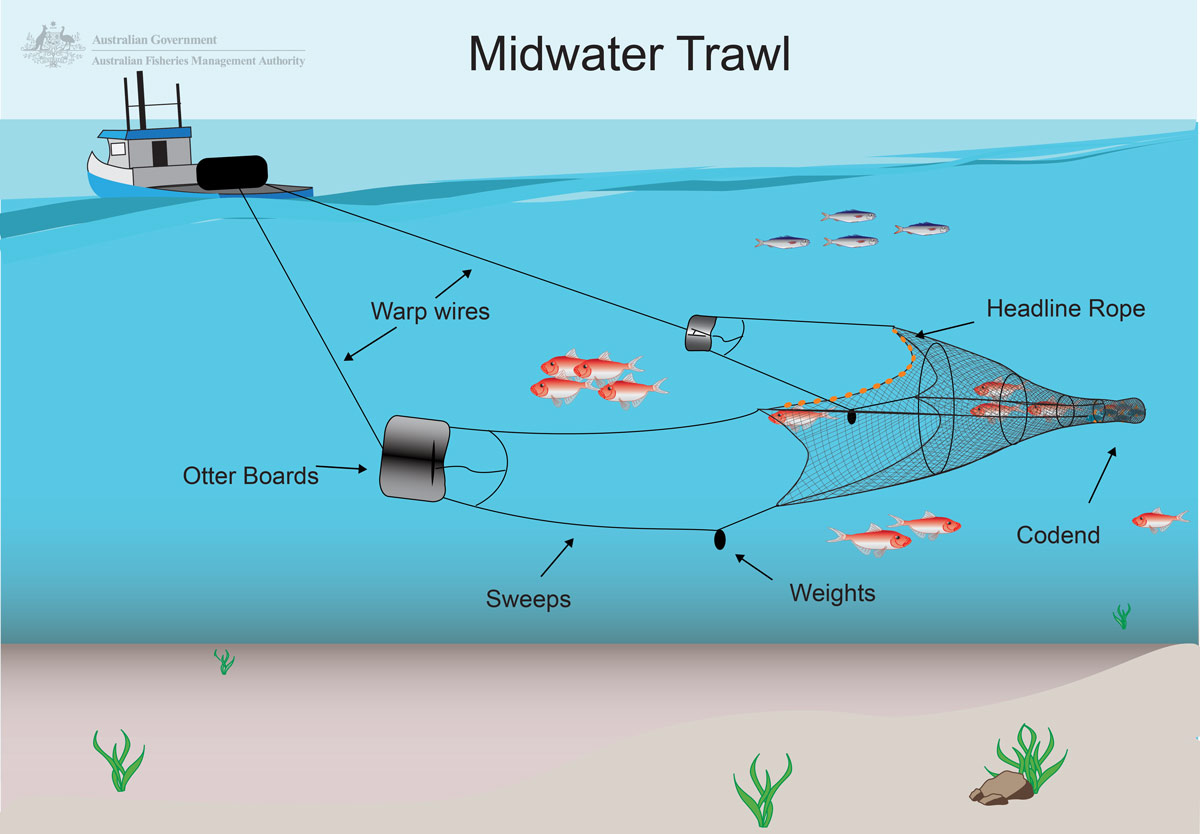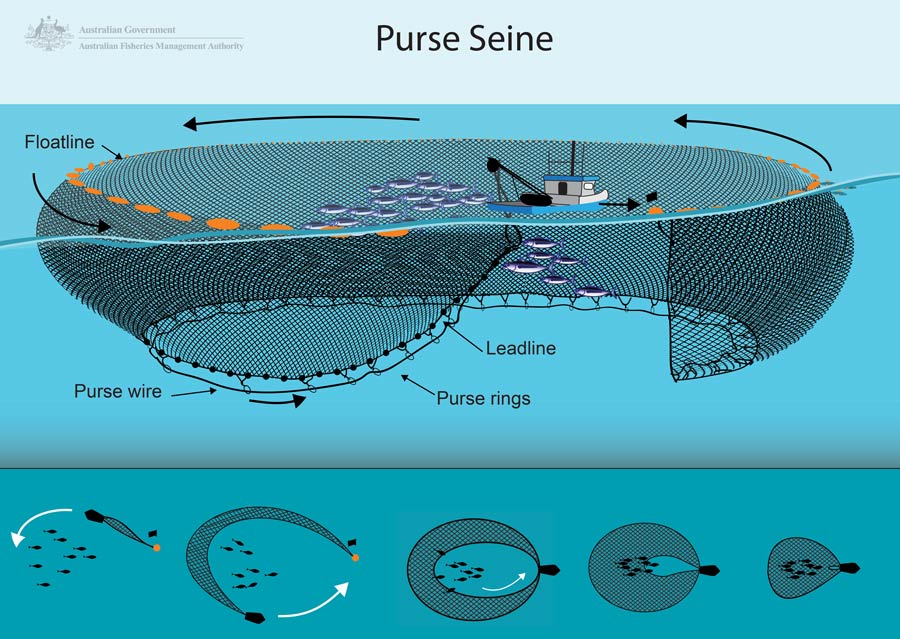Australian sardine is a strong-flavoured fish and strong-flavoured ingredients are recommended.
They can be cooked whole, and is well suited to grilling, accompanied by strong flavours. They are great in a tandoori or skewered.
Download our species guide on common species caught in AFMA managed fisheries.
Catch limits
| Catch limit | Fishing Mortality* | Biomass** |
|---|---|---|
|
Catch limit 8,060 tonnes For the 2023-24 Season |
G;Not subject to overfishing | G;Not overfished |
* Fishing mortality status relates to the level of fishing pressure on a stock - specifically, whether fishing mortality in the year being assessed is likely to result in the stock becoming overfished, or prevent the stock from rebuilding from an overfished state. If fishing mortality exceeds either of these thresholds, a stock is considered to be subject to overfishing.
** Biomass status relates to how many fish there are - specifically, whether the biomass in the year being assessed is above the level at which the risk to the stock is considered to be unacceptable. The HSP defines this level as the limit reference point, below which the stock is considered to be overfished.
Scientific name: Sardinops sagax (formerly S. neopilchardus)
Family: Clupeidae
Other names: Pilchard, sardine, picton herring, blue-bait
Description: Australian sardine have cylindrical, elongate bodies with blue-green backs. The sides are white with a row of dark spots along the upper sides of the body. The operculum (the bony flap covering the gills) has clear bony striae (thin lines) radiating downwards. The belly is rounded with ventral scutes (bony scales).
Size (length and weight): Up to about 20 cm in length and 0.48 kg. Commonly found at 18 cm in length and 0.1 kg.
Life span: Up to about 9 years.
Habitat: Australian sardine are found primarily in temperate waters throughout the eastern Pacific Ocean. They are a coastal species that can usually be found from inshore waters to the edge of the continental shelf, down to depths of about 200 metres. Australian sardine are often found in large schools. Feeding is thought to mainly occur during the day.
Prey: Zooplankton and other small invertebrates.
Predators: Marine mammals, marine birds, and larger fish such as tuna and flathead.
Reproduction: Australian sardine reach reproductive maturity at 2‑3 years of age. Spawning occurs during spring‑summer in the southern part of its range, and in summer‑autumn in the northern part. It was previously thought that Australian sardine only spawn once or twice in a season, but research on similar species suggests that they may spawn multiple times. Females produce 10 000‑45 000 eggs per spawning event depending on their body size.
| Fishery found in | Gear used | Catch of species is targeted or incidental |
|---|---|---|
| Small Pelagic Fishery | Midwater trawl and purse seine | Targeted |
| Southern and Eastern Scalefish and Shark Fishery – Commonwealth Trawl Sector | Midwater trawl | Incidental |
| State fisheries – New South Wales, Tasmania, Victoria, South Australia, Western Australia | Trawl | Targeted |
The Commonwealth catch of sardine is managed by quota. Which means the catch of this fish by commercial fishers is restricted by weight.
Commercial fishermen are required to fill in records of their catches, during each fishing trip and when they land their catch in a port. This helps us keep records of how much is being caught.
AFMA decide on the amount that can be caught each year from expert advice and recommendations from fisheries managers, industry members, scientist and researchers.
Australian sardines are found in temperate waters between Rockhampton in Queensland to Shark Bay in Western Australia, including northern Tasmania on the continental shelf in depths between 100-400 metres.
Fishing for Australian sardine in the Small Pelagic Fishery is restricted to Commonwealth waters off New South Wales. The majority of fishing in the Small Pelagic Fishery has historically taken place off Iluka in Northern NSW and Eden in Southern NSW. South Australian state fishers take significant amounts of Australian sardine.
AFMA carries out ecological risk assessments (ERA) for all of its major fisheries which assess the impact of fishing on bycatch species and habitats. AFMA reduces any impacts through a number of management arrangements and strategies detailed in its ecological risk management (ERM) strategy. These assessments indicate that fishing for the eastern stock of Australian sardine is highly selective and has low rates of bycatch. However there are measures in place to minimise impacts on threatened endangered and protected species including compulsory seal excluder devices for midwater trawl nets and vessel management plans that include measures specific to the operations of individual boats to minimise interactions with seabirds and threatened, endangered and protected species, such as seals and dolphins.
When fishing for Australian sardines, fishers use midwater trawl nets and purse seine nets.
Midwater trawling
Midwater trawl gear has minimal impact on the environment primarily because it does not come into contact with the seabed.
Sometimes, midwater trawling can catch unwanted species of fish (not the type of fish the net was supposed to catch). This is known as bycatch and it is monitored by on-board fishery observers who assess the environmental impact of the trawling.
AFMA’s management of commercial trawl fisheries aims to ensure trawl fishing has the least impact possible on the environment.

Purse seining
The purse seine method of fishing is very selective as it usually targets only one species at a time. This means that there is very little impact from purse seine fishing on other marine species. Purse seine nets are set near the ocean surface and do not touch the sea floor, so their impact on the marine environment is also very small.
In some countries, purse seine nets may be set around a floating object such as ocean debris. These objects are called Fish Aggregating Devices (FADs) and large numbers of fish are often attracted to these. This means that if a purse seine net is set around a FAD, many other marine species may be caught. The use of FADs for purse seine fishing is not allowed in Australia.

Want to know more?
This is just an overview of Australian sardine, if you want to know more see the links below.
This fish is managed under the Small Pelagic Fishery.
- See the most recent Fishery status report
- Download raw data on annual catches from AFMA catch disposal records and AFMA daily fishing logbooks
- South East Management Advisory Committee
- Bycatch and discard program
- Visit the FRDC Fishfiles website for the best cooking techniques and recipes for this fish